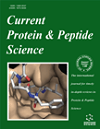
Full text loading...
We use cookies to track usage and preferences.I Understand
Diabetic nephropathy is characterized by elevated oxidative stress and chronic inflammation in the kidneys. A class of proteins called sirtuins is well-known to be important for a number of cellular functions, such as metabolism, stress tolerance, and ageing. Among them, SIRT1 is associated with the progression of diabetic nephropathy, a dangerous kidney-related consequence of diabetes mellitus. Thus, this study aims to examine the function and pathways of sirtuin that are responsible for the progression of this disease.
Publications considered from the standard databases like Pubmed-Medline, Google Scholar, and Scopus using standard keywords, “Sirtuin,” Signalling pathway”, and “Diabetic Nephropathy” well described the actual knowledge on the scientific literature indicating patient susceptibility to kidney disease that is influenced by sirtuin-1 gene variants.
The research results imply that sirtuins offer enormous promise as cutting-edge therapeutic targets for kidney disease prevention and management. Renal fibrosis, metabolic disorders, renal impairment, and a possible regulation mechanism all probably entail blocking inflammation through various signalling pathways.
A comprehensive understanding of the fundamental pathophysiological pathways targeting sirtuin is essential as a diagnostic tool. For the treatment of diabetic nephropathy, researchers are developing therapeutic techniques to target biological roles and functions of different types of sirtuin, processes, and signalling pathways.

Article metrics loading...

Full text loading...
References


Data & Media loading...

